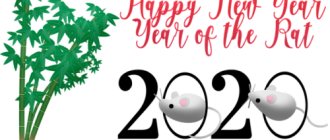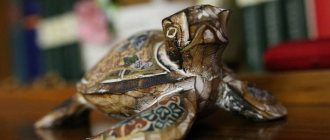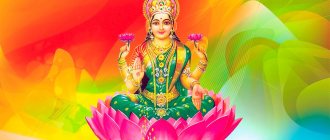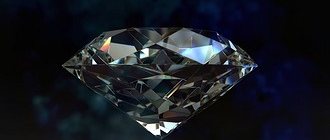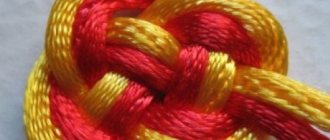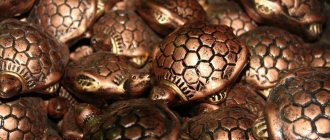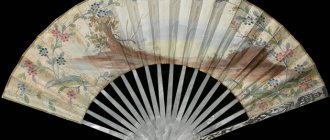Description of the suit
The original classification, which existed in ancient times, distinguishes the following colors: red, bay, gray and black. The remaining types are combinations of the four main ones.
Recently, a different systematization, proposed by the scientist Philip Sponenberg and based on genetics, is more often used. According to this theory, the following varieties are distinguished: black, bay, red. In addition, there is a classification by Ann Bowling, which includes only two species: black and red.
Bays are considered hardy, fast, and at the same time obedient. First of all, these are horses, so they participate in races more often than others. This is a restless species, but quite controllable with proper training from an early age. It is believed that the darker the horse, the more restless it is. But in general, bays treat people well, respond to commands, and gladly accept rewards in the form of sugar, carrots or oats. They have a strong nervous system and genotype of inheritance of traits, as well as strong legs (especially the hind legs). Thanks to the developed muscles of the femoral part, animals quickly gain high speed.
The defining characteristics of bay horses include the following:
- brown coloring of the head, body, and upper legs;
- black color of the base of the limbs, tail and mane;
- gray skin color;
- Brown eyes;
- black ear rim.
Sometimes cubs are born with light legs and bellies, but during molting this shade disappears and the limbs darken.
The horse develops moral qualities in us
By contacting a horse, a person involuntarily changes himself. It all starts with overcoming your own fears. Almost everyone experiences this sensation when climbing on an animal several times larger than you. Getting rid of fear is the first and most important step that helps you become stronger.
With a horse you cannot be unfocused, lazy and irresponsible. Those who systematically engage in horse riding forever get rid of these negative qualities in everyday life. When contacting an animal, one feature is of fundamental importance: its obedience is achieved without intimidation and aggression, but through friendship, respect and care. This skill is of great importance in interpersonal communication, especially when it comes to the relationship between parents and children.
In general, the way of life of horses is in many ways an illustrative example for humans, and there is a lot to learn from them. These animals live in groups in which all relationships are based on mutual assistance. In the herd, everyone maintains the boundaries of personal freedom, and no one violates the autonomy of others. There is always a leader in the group, but there are no tyrants. The horse may show its temper, but will immediately come to a state of complete rest.
You can verify the uniqueness of these animals from your own experience. Communication with horses is a mandatory component of the on-site ecotherapy program. You will have an unforgettable and rewarding experience interacting with these animals.
What kind of horse is called a bay?
To understand what color characterizes the bay color of horses, one can recall the painting “Hunting with Greyhounds” (1889) by the famous hippologist and genre painter Nikolai Egorovich Sverchkov. It depicts a rider on a horse with a shiny chocolate skin, black legs and mane.
Etymology of the name
There are two versions of the origin of the word “bay”. According to one of them, it is related to the Czech lexeme, translated meaning “dark.” According to the second, it goes back to the outdated verb “to oppress” - to ignite.
General characteristics
All bay horses have the following common features:
- the color of the head, neck, body and legs to the hocks is brown;
- the color of the tail, mane and lower parts of the legs is black;
- gray skin;
- brown eyes;
- black edging of ears.
Sometimes the appearance of foals of this color with a light belly and legs is noted, but after molting the light hair disappears.
Brown body color comes in varying degrees of saturation. Depending on this, several variations are distinguished.
From the main suit a variety of sub-suits arise.
The division into suits, subsets, masterpieces and other classification methods is very arbitrary. Disputes about them continue, and taxonomy is in constant flux.
Interesting Facts
Bay horses are considered the most interesting and beautiful animals. For centuries, this type of color was in demand and demonstrated the best appearance and performance properties. Representatives of the suit are also distinguished by a lot of interesting facts and features.
With suitable care and maintenance, light apples may appear on the coat. Such a design automatically increases the cost of the horse, decorating it and making it graceful. Such patterns mainly appear in dark bay individuals, but there are no patterns associated with their formation.
Depending on the time of year, a mare or horse can change its color. For example, in winter the shade fades slightly, losing its shine, and upon the return of spring warmth it acquires its former saturation. Prolonged exposure to the scorching rays of the sun causes the coat to fade. To maintain rich tones, it is necessary to protect horses from exposure to ultraviolet radiation.
In most cases, the foal is born with light or yellowish legs. But this is not a cause for concern, because as the coat grows, it acquires the desired dark color. Both tall breeds and small ponies can become owners of the suit.
History and origin
Modern scholars associate the word "bay" with ancient European languages. But regardless of the country of origin, the name bay indicates something toasted or even burnt. Translated from Latin, “niddor” means smoke and fumes.
The popularity of bay horses
For centuries, representatives of different nationalities considered bay horses to be the most efficient animals with distinctive properties. At the same time, Arabian horse breeders argued that such horses are calm and docile, especially when compared with other colors.
Due to the mass of advantages, the suit is still in demand, being the most common. The graceful appearance arouses the interest of many breeders, which leads to the popularization of bay horses in various areas of human activity.
The relationship between color and character
Even in the distant past, Arab scientists identified an interesting fact. They proved that the color of a horse's coat plays a direct role in its working properties, physical abilities and disposition. At the same time, bay horses were in high demand, since owners of the color demonstrated instability to heavy loads, balance and calmness.
Horse connoisseurs from different parts of the world attribute many benefits to these animals, including:
- High endurance.
- Strong and athletic muscles.
- High acceleration speed.
- Energetic but flexible character.
Experienced breeders claim that working with such horses is much easier than with representatives of the black color, who demonstrate independence, willfulness and aggressiveness.
How to care for a bay horse
The bay horse is not a special type of animal, so all the subtleties of care come down to performing basic procedures characteristic of other colors. First of all, stallions and mares need to be provided with a comfortable and clean place of residence, which can be a private or rented stable. The second option is more in demand due to the absence of the need to care for the animals yourself.
There should be no drafts in the room where the animal is located. It is recommended to choose stables located on a hill.
Animals must have free access to clean drinking water, so a stationary drinking system can be installed indoors. The average daily fluid consumption reaches 30-40 liters of water and is determined by the weight of the animal.
The diet of bay horses should be balanced and high in calories. The specifics of the diet are selected taking into account the breed characteristics and taking into account the breeder’s recommendations.
To achieve the best external characteristics, the coat of a bay horse must be properly cared for. First of all, it is necessary to maintain the cleanliness of the stables, and also regularly clean the wool from parasites or dirt. If you follow simple care rules, the coat will shimmer colorfully in the sun, resembling tongues of flame. Otherwise, keeping bay horses does not require much effort.
Marathon “Man versus Horse”
Now it’s difficult to establish exactly how the idea was born? But there is still only one hero, and his name has long been inscribed in the history of Wales, as a person who managed to attract the attention of the whole world to this small country, which is part of Great Britain. His name is Gordon Green, and in 1979 the Welshman in question ran a pub. This is an established fact. But then the versions diverge. Some claim that Green accidentally overheard a conversation between two gentlemen, clients of his establishment, who were arguing over a very unusual issue - whether a man could outrun a horse. There are those who are convinced that Green personally argued with his friend on the same topic. One thing is clear: an unusual marathon will soon start in Wales, whose results should put an end to doubts about who is faster - a man or a horse. The initiator and organizer of the competition was the same owner of the drinking place, Mr. Green. By the way, he even bet on the victory of Homo sapience, which did not live up to the hopes of the energetic man. However, Green lost more than once.
But that's not what this is about. The rules of the competition stated: a person and an animal (in this case, a horse) start with a small time difference, namely 15 minutes. Such a head start was given to a person, and not at all for any selfish reasons. This was done out of a desire to avoid an involuntary (and quite possible) collision between a runner and a fast horse. The horse's rights were in no way infringed - after passing the finish line, the agreed difference was taken into account when recording the result. Finding out who was faster had to be done in rough terrain, which, in theory, should have made it difficult for the four-legged participant in the marathon, the total length of which was 35 kilometers. As the debut races showed, the horses outright outperformed their two-legged rivals, and the marshy soil and other delights of the Welsh landscape in no way influenced the animal’s desire to defeat humans.
In 1985, due to the disastrous statistics of the marathon, it was decided to involve cyclists in the cause. Even if not immediately, but with the help of two-wheeled transport we managed to impose a fight on the obstinate animals. In 1989, the first victory was brought to people by cyclist Tim Gould. Five years later, the bicycles were disqualified due to the damage the wheels caused to the surface of the route. And the man was again left alone with the horse. Faith in one’s own strength, as well as a burning desire to annoy the bookmakers who stubbornly gave preference to tailed marathon runners, nevertheless helped the man climb onto the podium in 2004. The winner was runner Hugh Lobb in 2:05.19, while the horse galloped to the finish line in 2:07.36. For the long-awaited victory, the athlete was duly awarded a cash gift in the amount of 25 thousand pounds sterling. People celebrated their dominance for the second time in 2007, when German-born Florian Halzinger reached the finish line in 2:20:30, almost 11 minutes ahead of the nearest horse.
This is where the man's glorious achievements ended. At the moment, apart from two clean victories of Lobb and Halzinger, we have nothing to show for the horses. However, people picked up the baton of Gordon Green in particular and Wales in general, organizing similar competitions in other countries and even on other continents. And who knows what victories are forged, say, in New Zealand, where this competition has acquired considerable scope. The world will probably soon hear the names of new champions. The main thing is that he does not forget the small pub in a modest Welsh town where it all began.
Varieties of bay color
The above describes the standard for identifying a horse as a bay. However, within this suit there are a lot of shades and variations, sometimes so different from the “source” that only a specialist can correctly identify the suit.
Light bay
A light bay horse, as you might guess, has a basic color of a light brown or red (brick) hue, while on the back it is darker than on the belly (sometimes a dark stripe runs along the upper part of the body like a kind of “belt”).
Areas on the face, often around the eyes, may also be light. The rest of the head, mane, tail and lower legs are dark brown or black with brown hairs.
Did you know? “White socks” on the legs of a bay horse are quite acceptable, although until recently there was a myth that the light color of a limb indicates its weakness and soreness. To see the stupidity of this statement, it is enough to say that the most expensive horse in the world, a thoroughbred stallion of the English riding breed named Frankel, valued at a record two hundred million US dollars (!), has a bay color with symmetrical white socks on all four legs.
Dark bay
A dark bay horse has black legs, mane, and tail. The back and the lower part of the muzzle are almost black. The main color is dark chocolate, with a lot of black hairs.
Unlike the karak color, with which dark bays are often confused, the latter should not have any tan marks or light spots.
Cherry bay (red)
Cherry bay horses have a beautiful reddish (light or dark) base coat color against a background of brown or red.
The color of the mane, tail and legs also has a brown tint. Red horses, according to many connoisseurs, are the most beautiful cover, but they are quite rare.
The coat of such horses really looks luxurious in the sun, shimmering with red flashes.
Bay deer
This is a two-tone color, where the darker color of the upper part of the body smoothly turns into a lighter color in the lower part (like a deer, hence the name shading).
Chestnut
Almost a classic option. The name of the main dark brown color speaks for itself. A very beautiful color, especially in the shimmer of sunlight.
Cereals are the basis of a diet of concentrated feeds that give strength and energy to horses. These include corn, oats, barley, wheat and rye.
Karakovy
As was said, horses of this shade are very similar to dark bays; they are separated into a separate group due to the light tan markings found on the face and in the groin of the body, that is, the dark areas are distributed on the body of such animals more zonally.
The name has the same root as “brown” and comes from the Turkic “kara-kupa”, meaning black-brown color. Interestingly, in most modern European languages such horses are called black and bay.
Podlasye
The marking also suggests the presence of light tan marks, which may be present on the face, groin and even on the croup and front legs, with the main body color being bright brown. A rare variation indicating the manifestation of a gene from wild ancestors.
Golden
A variation of a light bay shade, when the main color has a golden-red tint.
Did you know? The color of an animal is manifested due to a very specific combination of genes. To this day, it has not been reliably established whether there is a direct connection between the gene responsible for coat color in horses and the gene responsible for character, health and other characteristics. Many experts give a positive answer to this question. Perhaps there is some truth in this; it is not for nothing that bay horses (and they are found in most breeds) are so popular in equestrian sports, because such horses are considered the healthiest, strongest and most balanced.
Bay color is not a sign of purebredness, although there are breeds that suggest a very specific color.
The fashion for different colors of horses may change, but certain variations of the bay will always remain popular, not only because this color is the most common, but also because it surprisingly suits this graceful and noble animal.
How to get a horse's attention
Why is the horse inattentive during training? Why does it happen that we try and try, and as a result we leave training with annoyance at the horse, at ourselves, at the circumstances and without any changes? Why do you flutter, jump in front of the horse, fuss, try to explain to it what needs to be done, while the student dreamily looks at the horizon or every now and then strives to run away so that he can finally enjoy the lush grass or at least hay.
What is the problem?
Of course, in us! Will you be friends with a person who does not know how to express his thoughts, mumbles, is confused in his actions, fusses and does not do anything interesting? If a person does not show himself, few people will be interested in him, few people will pay ATTENTION to him. This, as with leadership, is a purely psychological question. So let's look at ourselves from the outside, analyze our behavior and make a competent correction. You won't recognize your horse! She will also be pleasantly surprised that you, it turns out, are a very interesting “person” and it’s very interesting to be with you. And most importantly, you will learn to attract the horse’s attention in a language he understands. And if you have contact, where will it go if you do everything right?
Let's compare reality (the quality of your actions in the lesson) with the ideal:
- Your focus is on the horse. Every time, even before starting to work with the horse, tune in and internally concentrate on your current tasks for this lesson. When you ask your horse to do something, whether it is a static exercise or a dynamic exercise, maintain eye contact. Do not allow leftist thoughts about the meaning of life or about everyday problems, leave all thoughts outside the arena gates. Be here and now with your horse. Watch and observe her. These observations can give you a lot of information, including about your safety. Your horse will be grateful for your attention and will respond in kind.
- Your focus is on the current impulse. You must understand that with a low energy impulse, you will not force, you simply will not be able to send the horse into a gallop or make any other movement that requires impulse, a release of energy, a jerk. In the same way, on the contrary, you cannot stop or calm a horse, even slow down or relax the horse in a static exercise (for example, when laying down) if you yourself do not control your energy, and your heart is about to jump out of your chest! Therefore, pay attention to this point. You can even practice generating energy bursts and lows at home.
- Gestures, posture – body language. The language of gestures and body movements will certainly help you with this (in creating the appropriate impulse). When you want to stimulate the horse's mind to trot energetically, for example, your posture should be more tense than when walking (ground work). It may not be very noticeable outwardly, but the horse will understand you perfectly! The same is true when you want to calm or stop a horse, you can even imagine how when you relax your posture, your energy level drops lower, as if on a diagram, the horse will definitely read this information from you, like an electrician from electricity sensors!
- Mastery of the situation. What is it and what is it eaten with? Like everything ingenious, it is very simple. You just have to be one step ahead of your horse (your student). One step is enough. Not in the physical understanding of space, but in your understanding of the situation and a clear knowledge of what should follow the present, current moment. Thus, it is easier for you to keep the horse’s attention, because you maintain contact without hesitation to think “what to do next”, your lesson with the horse begins to resemble a real dance!
Typical mistakes. Attention.
Often we do not notice that the horse is distracted and continue the lesson process on our own wavelength. As a result, we are not heard and, accordingly, the response is either inadequate to the team or not at all. Therefore, keep an eye on your student and do not continue the lesson until you return the horse’s attention to you again. Once you are sure that the horse is listening to you and is concentrating on what you are saying or showing, then continue. And you will succeed!
Practical advice.
The most effective and simple way to attract a horse's attention is a sound signal, especially if you reinforce the horse's correct reaction with something positive - turning his head in your direction, ears pointed in your direction.
The second way to attract a horse's attention is through tactile contacts; the horse immediately concentrates its attention on your stroking and touching. Also reward the horse as soon as his ears are pointed in your direction - praise him.
And another way to direct the horse’s attention to yourself is to move towards his croup, that is, to the blind spot. The horse is more comfortable seeing you in front of him or to the side than behind him. The horse will begin to follow you and, having made sure of its attention, praising and encouraging it, you can begin further work.
Category: Beginning cowboy Tags: attention | horse | attraction | work | tips | workouts← Fly spray! How to teach a horse not to be afraid? How to gain a horse's trust →
Discussion is closed.
Animal care
The individual must always be kept clean, its premises and harness must be well-groomed. After feeding, all the following equipment:
- Scoops.
- Feeders.
- Bowls.
- Buckets must be washed thoroughly using hot water.
In order for a horse to have good health and well-being, sanitary conditions must be maintained. It is recommended to provide clean fresh water for the animal in advance. The daily need for liquid is considered to be at least 35 liters, and in the summer, water consumption is much more. The required body temperature is maintained by drinking plenty of fluids. If fluid intake occurs on time and in sufficient quantities, the entire body is saturated with nutrients, and the joints do not lose lubrication.
Males and females need to be watered frequently and given access to liquid, but only before feeding. The cleaner the animal is kept, the more beautiful its appearance will be. Feeding the suit also plays a major role in the life of the individual, so it is recommended to create the correct feeding regime for the suit.
Folk names of suits
- Leopard
- forelock. - White
was the name given to Arabian horses that were light gray in color. - In oil
there is wool with a greasy sheen. - Blue
- black with a bluish tint, gray with a bluish tint, mousey. - Igrenaya
is the popular name for the game suit. - , Isabella
was the name given to light-colored horses. According to V.I. Dahl's Dictionary, this name denoted a dun color with a reddish tint. - Kaltaraya
-
Sib.
bay with a white mane, possibly silver bay. - Kalyunaya
-
East Sib.
dun with red or dun-savrasaya. - Brown
- black with a dark brown tint, that is, black in a tan or ash-black. - Winged
- a horse of savras, mouse or brown color with dark shoulders. - Lapts
are white spots on a pinto horse. - Mukhorty
,
Mukhortaya
- bay (bay), with yellowish tan markings on the muzzle, legs and groins. - Sex-gray
- gray based on a red or bay color, looks like gray with an admixture of yellowish wool, the tail and mane are sometimes dark gray, and black. - Pink
- red-gray, gray color based on bay. - Speckled
is a horse with white spots on its head, possibly Birdcatcher's markings. - Gray in mustard
- gray in fine buckwheat. - Gray with flecks
- gray with dark large buckwheat. - Gray
or
gray roan
- gray with a pronounced reddish tint or gray with a dark tail and mane. - Gray-iron
, or
steel
- dark gray. - Gray
- black with graying (possibly a faint sabino or dark gray). - Grey-iron
- gray with a reddish tint. - Porcelain
- gray based on piebald, gray-piebald. - Khalzanaya
-
Sib.
dark color, with a white bald spot. - Chagravaya
- dark ash, possibly mousey. - Chankiraya
-
Sib.
Isabella horse.
Basic horse colors
Our ancestors were very scrupulous in choosing the color of horses. Indeed, even today professionals claim that the color plays a key role in the animal’s performance and its resistance to various diseases. Of the rich variety of colors, bay horses have always been preferred due to their docile nature, peacefulness, calmness and reliability.
They were taken with them without fear as faithful comrades into battle, field work, and reconnaissance. It’s not for nothing that centuries-old Arab wisdom says: “Never buy a red horse, sell a black one, take care of the white one, and ride a bay one yourself.”
Did you know? Horses
-
one of the few equids that can truly be friends.
For example, Alexander the Great was saved from certain death 9 times by his horse Bucephalus. When the animal fell on the battlefield, a city of the same name was founded in its honor. And one of Genghis Khan’s military leaders had a rule of talking about his plans and military strategies to his horse. Based on the animal's reaction, he judged the correctness of the chosen tactics. Contemporaries, adhering to the traditions of ancient Greek times, divide all horses by color into 4 groups:
- Bays. It is characterized by a rich brown body color and jet black mane, tail and lower legs. Various shade combinations of this combination are allowed. In wild horses, which are very rare today, the transition between colors is blurred, and the black hair does not reach the joints.
- Redheads. It stands out for its bright fiery color, which spreads over the entire body and can vary in shades from light apricot to dark chestnut. Some representatives of the suit may have a mane and tail that is lighter or darker than the body. It is also not uncommon for these areas to change their shade depending on the season. It is characteristic that in red horses the shade of the legs always matches the body. This is their main external difference from their bay counterparts. In addition, red-haired horses are considered less hardy in work and sports, and they are also noted to have nervousness and an ardent temperament.
- Gray and white. It appears when the foal reaches sexual maturity. Characterized by the presence of a large amount of gray hair. As such an animal ages, it may turn completely white. These processes primarily appear on the bridge of the nose, legs, croup, and abdomen. But experts consider the most striking sign of a gray color to be “apples” - round spots of a light or dark shade, which duplicates the subcutaneous capillary network. In horse breeding circles, it is customary to consider such horses as unsuited to hard, exhausting work. They are credited with a gentle nature, a tendency to disease and a loose physique.
- Voronoi. It is distinguished by a pure black color of all parts of the body. It can have several shades, the intensity of which depends on the genetic stability of the pigment. There are cases when the ends of a black horse's hairs burn out in the sun, and by the end of summer it acquires a dirty brown tint. In winter, color returns. Variations with chestnut and ash tints are also possible. However, such horses are characterized by excessive viciousness and restiveness.
According to domestic experts, all other suits are derived from those listed. At the same time, foreign zoologists are categorical in their belief that the classification of horse color should be based on genetic data. Therefore, white and gray varieties are excluded from the list of main colors.
Did you know? The ancient ancestor of modern horses is the peace-loving herbivore Eohippus, which lived on the globe more than 60 million years ago. With a height of 35 cm at the withers, the animal weighed no more than 5 kilograms and was distinguished by its defenselessness.
Online games about horses
Star stable online
A popular multiplayer project, adapted mainly for girls. Here players will be able to acquire their own horse, which they will need to develop and prepare for participation in sports competitions.
Upon successful performance at the races, the character will receive in-game currency. This money will be needed to purchase unique outfits for the main character, or to purchase new exclusive horses and appropriate equipment for them.
The game mechanics here are realistic, just like in real life, because without proper care for your pet, its physical characteristics and skills will decline. Therefore, you will need to pay attention to the horses every day so that they are healthy, strong, and always eager to be active.
At the moment, the game features about 80 unique breeds of animals, but over time this list is regularly updated with new species. In addition to the classic types of horses, fairy-tale creatures will also be available to players upon successful completion of single missions.
Separately, it is worth mentioning the deep storyline that reveals this game project. The story takes us to the island of Jorvik, whose inhabitants are at risk of getting into trouble because of a powerful creature named Garnok, who lives at the bottom of the Evil Sea.
Horse Paradise - My Dream Ranch
A simple casual farm simulator where you can breed horses. In addition to the standard breeds of fleet-footed pets, you will have access to unique fantasy animals with their own characteristics and physical characteristics.
The game mechanics will not be limited to just caring for pets, because the project is multiplayer, so gamers will be able to compete with each other in dynamic races. Races can be made both against virtual bots and together with real players.
Riding club championships
A high-quality simulator of professional equestrian sports, featuring good three-dimensional graphics and detailed animation. The gameplay possibilities are also great, and offer users a huge selection of different actions.
The game features several popular modes: horse racing, performing tricks, jumping over obstacles, going around barrels. Competitions can take place both in single player mode and in multiplayer mode, with real players.
An important feature of the simulator is the ability to create your own travel routes, which you can share with your friends. For these purposes, there is a powerful level editor, with many built-in objects and high functionality.
Riding out
A modern multiplayer game about horses, the development of which began back in 2020. Here players will be able to create their own farms and raise horses, changing their appearance, choosing equipment, and simply caring for their favorite animals.
What deserves most attention is the huge and open world where you can travel, do research, and complete various story quests. You will also have to work, collecting useful resources, from which food for animals will later be created.
Separately, it is worth mentioning the advanced crafting system, because here players will be able to independently create food, medicine, and pieces of equipment. The main thing is to collect all the necessary components for crafting by completing tasks or exploring various locations around the world.
Horse isle
A very touching casual life simulator with 2D lamp graphics created in pixel retro style. In the game you will be able to independently curb and subjugate a wild horse, which can become a truly loyal and reliable friend.
Together with your assistant, you will explore a huge mysterious world, collecting unique items, improving equipment, and simply earning money for further development. For these purposes, there is a huge selection of auxiliary quests, which can be obtained from local residents - NPCs.
Suit classifications
The generally accepted classification of horse colors has been handed down to us since the times of Ancient Greece and involves the following names:
- bay;
- redhead;
- black;
- gray
Other suits are considered to one degree or another the result of a mixture of the above.
Note that the universality of this classification is being disputed in our time, and scientists are beginning to propose new variants of suits based on their observations. For example, Sponenberg, who put genetics at the forefront, distinguishes not four, but three suits. His amendment is to remove the gray suit from the list.
Nowadays, the generally accepted classification is being actively rethought and edited.
Another scientist leaves only two variations: black and red. It is quite difficult to talk about what will happen to the suits in the future. However, despite the attempts of modern specialists to make adjustments to the original classification, it does not lose its relevance, and therefore in this article we will be guided by it.
Varieties of bay color
The color variety has a large number of subspecies - undertones and undertones, sometimes very different from the usual description of animals of this species
Experts pay attention not only to the shade of the horse’s coat, but also to the colors of the iris, brushes, mane and tail. So, horses with the same color, but different eye colors, belong to different colors
The bay color has been known to mankind for a very long time, during which time animals have been subjected to natural and artificial selection. Due to this, there are a large number of varieties of suit.
Light bay
Light bay horses have a predominant color of brown or red. In this case, the mare has lighter areas on the head (usually near the eyes) and belly, and on the back the shade is darker (sometimes running in a stripe along the ridge). The light bay horse has brown eyes with a yellowish tint.
Light bay horses are sometimes confused with chestnut horses. But it is easy to dispel doubts; the animals are most clearly distinguished by their mane and tail, as well as “stockings” on their legs: if they are not black, then they are red.
Dark bay
The predominant color of this base is the so-called dark chocolate. Because of this coloring, the dark bay horse is often confused with a crow. The first has black limbs, mane, and tail. The color of the back is also dark, as is the lower part of the muzzle. Dark bay individuals are considered persistent, have good health and a balanced character.
As for the differences from the black one, there are several nuances. It is not difficult to distinguish a black horse from a dark bay. But it will be more difficult to distinguish a black one with a tan: the deep black color of the hair fades under the influence of the sun and becomes reddish at the ends. As a result, the black horse has a reddish-brown tint, characteristic of dark bay horses. This can be detected by careful examination: the hair at the roots is darker, and the ends are lighter. In addition, the horse will again become jet black when it sheds during the winter.
Cherry
The cherry bay color is distinguished by its brown color, and in the sun it casts a bright brick color. If the horse is light, it appears as if it is red; if it is darker, it appears to be cherry. The ears, mane and tail are black, but also with a brown tint. The rich red-red color is not so common, so horses of this color are popular, since many connoisseurs consider the cherry undercoat to be the most beautiful.
Bay deer
The bay horse has a two-tone coloration. The darker tone of the upper part of the body smoothly transitions into lighter shades on the lower part of the body. Thus, the sides and belly are golden; and the head, spine and tail areas are brown. The limbs are, as usual, black. This gradient is reminiscent of the colors of deer, which explains the name of this subspecies.
Chestnut
The chestnut-brown bay stallion has a rich dark red color that glows purple in the sun. Chestnut color is quite common, named because of the color's resemblance to the skin of a chestnut tree.
Karakova
These bay horses have a deep dark brown, almost black color. They are distinguished from dark bays only by the presence of small light brown tan marks on the head and groin part of the body. The legs and tail with mane are charcoal.
Podlasaya
This variety of bay horse color is also distinguished by the presence of tan marks. Lighter areas are located on the face and body of the animal, as well as on the forelimbs. The predominant color is bright brown. Podlasaya is a rare breed of horse, the appearance of which is explained by the manifestation of genes from wild ancestors.
Golden
This subspecies of the bay horse is similar to the light bay base, but in addition to the main shades of the color - reddish-brown - it is distinguished by the presence of a golden tint. This subspecies can also be considered quite rare.
The bay horse is in demand among breeders. This is the most common color; this color is found in all breeds of horses. Bay dogs are valued for their performance and physical characteristics. The Arabs call horses of this color the calmest and most pliable. With the advent of equestrian sport, bays immediately began to stand out for their best results, so athletes often prefer them. Due to its impressive appearance and physical qualities, this type of horse has become popular.
Bay horses are an excellent choice for a horse breeder, since the animals are beautiful, hardy and fast, have good health, and are also easy to train.
Horse games for one player
The Sims 3 Pets
The SIMS series of games is the legendary and most successful life simulator, where the main character independently carved out his destiny in the virtual world, managed the house, worked and made new acquaintances. New projects gradually improved and offered fans even more unique opportunities.
In 2011, the developers of the digital product for the third part of the game released the global addition “Pets”. Thanks to this, players will now be able to care for and care for dogs, cats and horses.
With proper leveling of your character, you can spend a little money and start your own ranch. Each animal has its own character and unique features. Therefore, every acquaintance with them is accompanied by amazing events.
As for the gameplay, gamers will be able to feed the horses, comb them, change their appearance, and much more. The most enjoyable and exciting thing is the dizzying trips through extraordinarily beautiful and mesmerizing locations.
Secret of the Magic Crystals
A relatively old, but incredibly exciting horse simulator from 2010, dedicated exclusively to these amazing animals. You will be able to fully care for your pets, feed them, trim them, and simply give your sincere love.
Separately, it is worth mentioning the very developed and varied control mechanics, since players will even be able to equip a horse farm. In the future, you will be able to take part in competitions by first preparing your pets at a special site.
Users will especially be pleased with the large selection of animals, because not only ordinary horses will be available. Fairy-tale unicorns, demonic creatures, pegasi, snow horses - you can place all of them in your farm.
Starters orders 6 horse racing
The sixth part of the popular sports simulator, where players can fully engage in equestrian sports. To win the competition, you will have to give all your love and care to the animals.
Players will begin their journey with a small stable, which must be regularly improved and developed. Over time, you will be able to purchase expensive thoroughbred horses intended to participate in the most responsible and important races.
The gameplay in the game is very diverse, because in addition to standard object management, you can bet on various sporting events. Separately, it is worth noting the very deep and multifunctional training system for horses, where you can improve their physical abilities and learn new spectacular tricks.
My riding stables: life with horses
Another well-known horse farm simulator where you have to buy horses and prepare them for horse racing. To do this, you will need to brush your pets, feed them, conduct joint training, and even do a restorative massage.
The main feature of the project is the possibility of personally creating unique breeds of horses, thanks to the crossing of genes. This will allow you to get the most unusual pets, capable of achieving high heights in competitions and showing off their beauty more than once.
The simulator shows real life as realistically as possible, because without an appropriate approach to horses, they will get sick and reduce their activity. And during long training they get tired and can become very tired, losing their former activity.
Ostwind/windstorm
An unusually beautiful and very atmospheric video game, created based on the popular film “East Wind”. The developers were able to perfectly convey the full storyline of the film, and even added an official soundtrack to the work.
The story of the game will tell us about a small but very brave fourteen-year-old girl named Miku, who trained a wild stallion in harsh conditions. Everything that happens between them is a sincere and bright friendship, without subordination or following commands.
As for the gameplay features, the player will have to take care of his friend and always help him become better and better. Together with your new assistant, you can go explore a huge virtual world that hides many secrets and mysterious discoveries. But the most important thing here is the extraordinarily beautiful spaces, the elegance of which will take your breath away for a very long time.
Wildlife park 2 - horses
An improved version of the official zoo simulator, where a global update has been added. Now a new type of animal will appear in the game - horses, which can bring great joy and benefit to their owner.
With proper care, these fleet-footed pets are capable of successfully performing in horse racing. This will bring you good fame, and will allow you to improve their living conditions with the money you win.
The greatest strength of the simulator is its realism, because it even clearly shows how horses mate with each other in the hope of having their own offspring. Therefore, the game is not recommended for use by young children.
